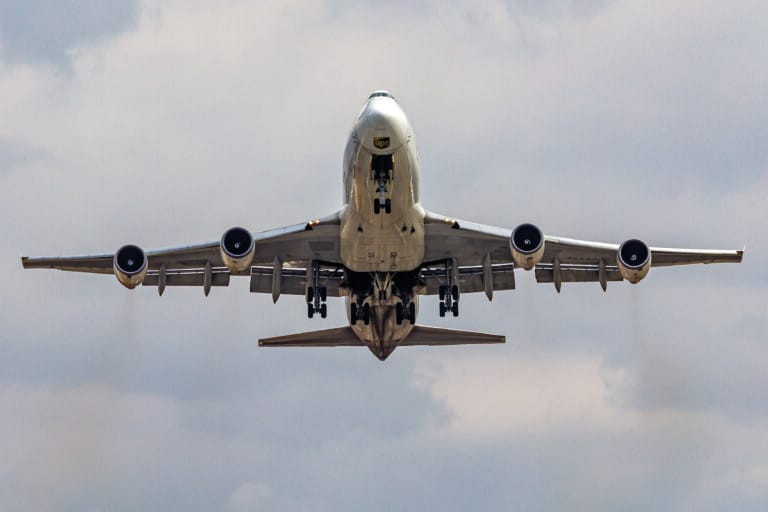A new kind of leadership is emerging as logistics adapts to a changing landscape shaped by evolving trade policies, climate imperatives, and technological disruption. A new kind of leadership is emerging. Younger, more pragmatic, and deeply invested in rewriting the rules of freight forwarding— this era is shifting the focus from asset-heavy expansion to digitally intelligent, environmentally conscious, and collaborative systems.
With global airfreight expected to triple by 2040—driven by surging demand from e-commerce, pharmaceuticals, and high-value supply chains—next-generation professionals are stepping forward with a vision that is as ambitious as it is grounded.
From cargo to code
Airfreight accounts for around 35 percent of global trade by value, despite representing less than 1 percent by volume. This disproportion underscores the sector’s dependence on precision and speed — both increasingly dictated by digital ecosystems rather than physical infrastructure.
“Our role is no longer just to move shipments — it is to integrate intelligence into every movement. The carbon footprint, the data flow, the regulatory trail — they are all now part of the product,” Avishkar Srivastava, director of the PDP Group and winner of the FIATA Young Logistician Award for Asia, said.
Srivastava highlighted drone-based delivery pilots in India — over 150,000 shipments in the past month alone — as evidence of rapid decentralisation. Yet he warned against blind adoption of innovation.
“We must evaluate not just operational metrics, but lifecycle emissions and regulatory conformity,” he said, stressing the convergence of technology with environmental and legal responsibility.
Collaborative infrastructure
Challenging the traditional mindset of territorial expansion, Nisarg Agrawal, director at Nagarkot Forwarders, argued for a pivot to asset-light, collaborative infrastructure.
“Rather than investing in duplicate facilities, we can use peer-to-peer networks and shared warehousing through vetted operators,” he said. This model echoes India’s national push to reduce logistics costs from 13 percent of GDP to below 8 percent by 2030.
For airfreight, it implies better utilisation of bellyhold capacity, shared bonded terminals, and seamless multimodal integration via cargo community systems (CCS).
However, collaborative models require a strong regulatory foundation. “Shared infrastructure works only if trust is codified,” Agrawal noted, pointing to gaps in contractual liability, data protection, and governance standards that must be addressed.
Tech that works
The panel consistently pushed back against the notion that innovation must be flashy or disruptive. Ashwin Vijayakumar, head of supply chain at Paramount Shipping, emphasised that effective solutions are often humble and tailored.
“Technology must be context-sensitive. Building an app for rural cargo tracking means accounting for bandwidth limitations, linguistic diversity, and basic user access,” he said.
These views reflect wider industry concerns. According to the World Bank, over 40 percent of small and medium-sized logistics enterprises in Asia cite poor interoperability as a barrier to digital adoption.
Rethinking growth
In a marked departure from growth-at-all-costs strategies, Shanu Gupta of Rishi Kiran Logistics made a case for “strategic restraint.”
“We don’t need five forwarders setting up identical facilities in the same metro. Collaboration and consolidation reduce overheads and carbon footprint simultaneously,” he said.
His firm has implemented modal shifts from air to rail and road wherever viable, and adopted shared office spaces in high-density corridors.
This aligns with emerging regulatory frameworks like the EU’s Corporate Sustainability Reporting Directive (CSRD), which requires detailed disclosures on emissions and ESG compliance.
As scrutiny intensifies, leaner, more collaborative logistics providers may find themselves with both reputational and financial advantages.
Human capital gap
While much attention is given to systems and structures, the biggest challenge may still lie with people. As Srivastava put it, “Tools are only as good as the hands that use them.”
India’s logistics workforce exceeds 22 million people, many operating outside formal training structures. Without widespread upskilling, digital transformation risks becoming a façade.
To tackle this, FIATA’s Vocational Training Advisory Body is rolling out e-learning platforms across the Asia-Pacific. Modules focus on digital documentation, ESG tracking, and blockchain-enabled verification of airfreight bills of lading, with pilots already underway in India, Indonesia, and Vietnam.
Enabling change
For policymakers, the implications are clear. If India aims to reach its target of a US$1 trillion export economy by 2030, it must enable — not obstruct — youth-led innovation.
That means reducing entry barriers for start-ups, incentivising shared logistics models, and supporting green freight initiatives.
Digital public infrastructure such as India’s ULIP logistics platform must also cater to micro-entrepreneurs. Young professionals should be seen not just as employees, but as architects of the future supply chain.
A future built on principles
The new generation of logistics leaders are not idealists or disruptors for the sake of disruption. They are pragmatists, responding to a complex world of shifting freight rates, evolving compliance demands, and growing environmental risks.
For the airfreight community — particularly those in policy, compliance, and sustainability — the message is unequivocal: innovation must be institutionalised, not improvised. Legal certainty, technological accessibility, and inclusive workforce strategies will shape the evolution from reactive logistics markets to proactive trade ecosystems.
As Srivastava aptly concluded, “We’re not just optimising cargo — we’re rewriting how it’s conceived, moved, and measured. And that starts with thinking differently.”





